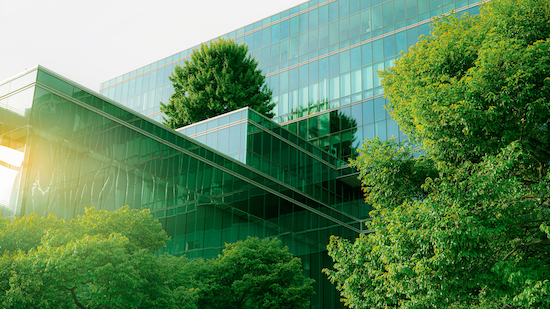
As urban populations continue to grow worldwide, city managers face mounting pressures around infrastructure, resources, and the environment. The intensifying climate crisis demands that we reimagine our approach to urban development—not through massive reconstruction, but through intelligent enhancement of what already exists. The integration of artificial intelligence (AI) and Internet of Things (IoT) technologies offers the most promising path forward, transforming existing urban landscapes into sustainable smart cities that optimize resource consumption while improving quality of life.
The Environmental Imperative for Smart Cities
Municipal operations account for a significant portion of global carbon emissions, from energy-hungry public buildings to inefficient transportation systems and wasteful resource management. Traditional approaches to reducing this environmental impact often require prohibitively expensive infrastructure overhauls, putting sustainability out of reach for many communities.
What’s changing the game is the emergence of “invisible AI”—solutions that integrate seamlessly with existing infrastructure to extract maximum value without costly replacements. By retrofitting current systems with AI capabilities, cities can achieve remarkable sustainability gains without the carbon-intensive process of rebuilding. This approach democratizes access to smart city benefits, making environmental improvements economically viable for communities of all sizes.
From Reactive to Proactive: AI-Powered Environmental Management
Traditional urban environmental management has been largely reactive—responding to problems after they occur. Smart city technologies fundamentally change this paradigm, enabling proactive approaches that prevent issues before they develop.
Consider traffic management, one of the largest contributors to urban carbon emissions. AI-powered traffic systems can analyze patterns in real-time, adjusting signal timing to reduce congestion and minimize vehicle idling. A single existing traffic camera, enhanced with AI capabilities, can not only track the number of vehicles on the road but their impact on traffic flow and emissions patterns as well. These insights enable cities to implement targeted interventions that reduce carbon output while improving mobility.
Water management represents another critical application. In regions prone to flooding, AI systems can predict potential issues hours or even days before traditional methods would detect them. Instead of relying on outdated techniques like painted measurement
poles, video analytics can recognize early warning signs and trigger preventive actions. This capability not only saves resources but prevents the environmental damage and energy-intensive emergency responses that floods typically require.
Digital Twins: Putting Sustainability Solutions to the Test
The most powerful tool in the smart city sustainability toolkit is the digital twin—a virtual replica of physical urban systems that enables risk-free experimentation. These comprehensive simulation environments allow planners to test the environmental impact of proposed changes before implementing them in the real world.
For sustainability initiatives, digital twins provide invaluable insights by modeling complex variables like energy consumption, carbon emissions, and resource utilization across different scenarios. Urban planners can visualize the environmental effects of new transportation policies, building retrofits, or waste management approaches, ensuring that investments deliver maximum sustainability benefits.
This virtual testing ground dramatically reduces the trial-and-error cycle that has historically slowed environmental progress. By identifying the most effective sustainability interventions before physical implementation, cities avoid wasting resources on initiatives that won’t deliver meaningful results.
Measuring Real Environmental Impact
The true value of smart city technologies lies in their ability to quantify environmental improvements with unprecedented precision. Consider energy management systems that provide granular insights into consumption patterns across municipal operations, enabling targeted efficiency improvements.
Real-time monitoring can uncover excessive energy usage that would otherwise go undetected. Beyond simple consumption metrics, these systems can calculate actual carbon impact—even determining the CO2 parts per million required to manufacture or operate specific components. This level of detail transforms abstract sustainability goals into concrete, measurable outcomes.
The environmental benefits extend beyond direct energy savings. By optimizing traffic flow, smart transportation systems reduce both fuel consumption and vehicle emissions. Meanwhile, intelligent building management minimizes energy waste across public facilities and automated water systems prevent leakage and overconsumption. When combined, these incremental improvements deliver substantial environmental returns.
Sustainable by Design: Low-Resource Technology
The sustainability advantages of smart city technologies extend to the solutions themselves. Today’s AI and IoT systems require significantly less computing infrastructure than their predecessors, operating efficiently even in low-bandwidth environments. Edge computing capabilities allow sophisticated analytics to run locally on existing devices, minimizing data transmission and associated energy costs.
This efficiency makes advanced sustainability solutions accessible to communities regardless of their resource constraints. A small town can implement the same powerful traffic optimization or energy management systems as a major metropolis, scaled appropriately for their needs. This is because the technology adapts to existing infrastructure rather than requiring communities to rebuild from scratch.
The Accessible Path Forward
As we look toward the future of sustainable urban development, the most promising approaches aren’t those creating entirely new eco-cities—they’re the ones enhancing existing communities through thoughtful technology integration. The smart city no longer requires massive investments or complete reconstruction; it emerges gradually through strategic application of AI and IoT capabilities to current infrastructure.
This accessibility represents perhaps the most important sustainability benefit of all. By lowering the barrier to entry, these technologies enable global participation in urban environmental improvement, regardless of economic status or technological maturity. Communities at any stage of development can begin their sustainability journey with targeted implementations that deliver immediate environmental returns while building toward more comprehensive smart city capabilities.
The path to truly sustainable cities doesn’t require starting over—it demands making smarter use of what we already have. By augmenting existing urban systems with AI and IoT, we can dramatically reduce environmental impact while improving quality of life for residents. This approach represents our best hope for creating environments that thrive in harmony with the planet rather than at its expense.





